One weekend habit to replace another
One of the things I missed most when we first moved to France was watching college football every weekend in the autumn. (This was in the days before Slingboxes and other solutions to seeing American television.) It didn't take long, though, before I found a most satisfying substitute: rugby. More specifically, French "Top 14" league rugby, and our local team, the ASM Clermont Auvergne club. And all this came rushing back to me last Sunday, as the team from Clermont-Ferrand was crowned once again as the national champion of France!
For an American football fan, it takes some work to understand the different rules and rhythms of rugby… but it’s worth the effort. These are guys that make American pro football players look tame by comparison. No heavy padding or massive helmets for these players – just a T-shirt, a pair of shorts and the occasional light leather hat for a sport that involves constant collisions at high speed, kicking and gouging. It’s no wonder that when you meet one of the ASM players on the street you may see gaps in his teeth, deep scars on his head, long scrapes healing on his shins.
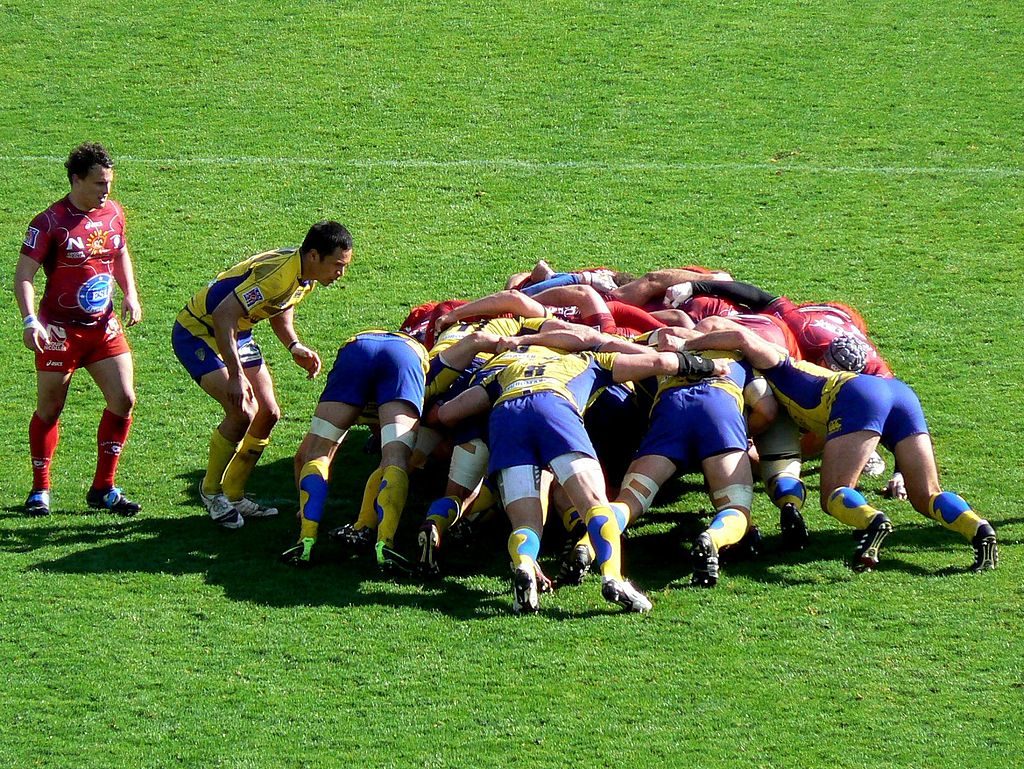
I'm not a sportswriter, but there's so much drama and emotion in the ASM story that it almost writes itself. There’s been a rugby club here since before World War I – and they long held the reputation of being one of the very best teams in France, but never quite capable of winning the championship. In fact, they made it to the final game of the season 10 times between 1936 and 2009 without actually taking home the title.
This will get your heart rate up!
... and it started with Michelin
They were amateurs in the beginning. The club was launched by Marcel Michelin, a dramatic figure in his own right. His father was André Michelin, one of the founding brothers of the great Michelin tire empire. Marcel worked for the company, and decided in 1911 that the men working in Michelin’s factories in Clermont-Ferrand needed an outlet during their time off; he founded the Association Sportive Michelin, an organization that still offers (106 years later) programs in every imaginable sport from swimming to judo to boxing.
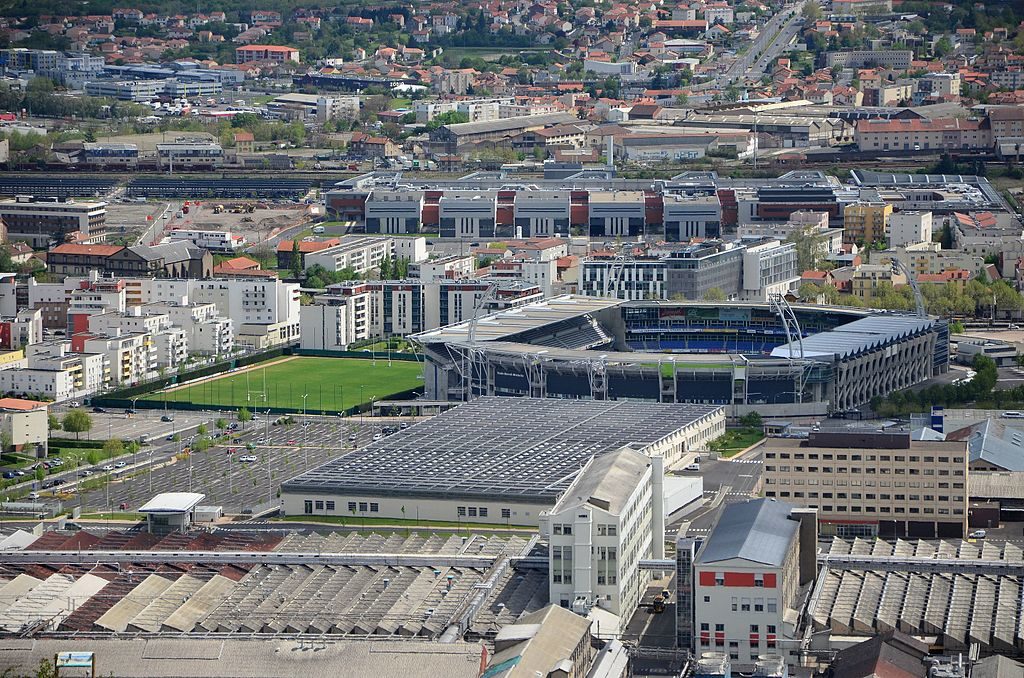
The club was forced to change its name in 1922, constrained by the rules of a national sporting association to get rid of any references to a commercial enterprise. To preserve the logo and the initials, the team was rebaptized the Association Sportive Montferrandais. When the Second World War came, Marcel took an active role in the French Resistance movement. He and his son were ultimately captured by the Nazis and deported to the horrible camp at Buchenwald; both died there.
Often at the top, but never the champions
Marcel’s rugby team endured, though, rising to higher and higher levels in the French leagues. The fine small stadium in Montferrand still bears his name, and the management of the team continues to be drawn from the senior executive group at the Groupe Michelin. ASM Rugby teams participated not just in the Top 14 championship league of France, but in other great competitions as well – runners-up 3 times in the European Rugby Champions Cup, runners-up 6 times in the Challenge Yves du Manoir.
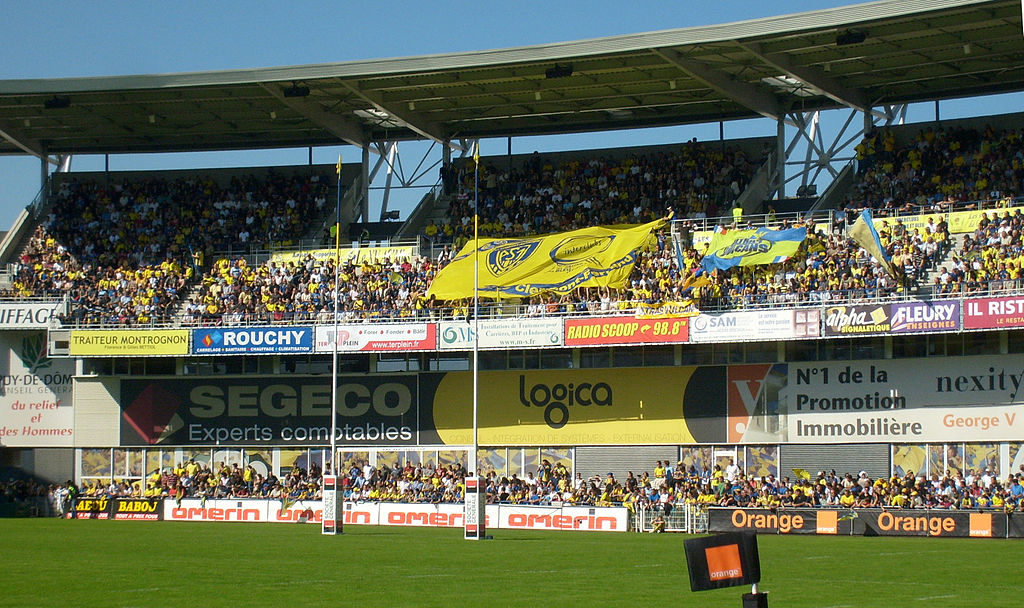
They even had a moment of celebrity in the United States in 2008, when my friend Michael Fanning helped Michelin organize a game between the ASM and the U.S. National Mens' Rugby team. They met in Charleston, S.C. and the match was nationally televised on ESPN Classic. The ASM team won, 37-14!
The team turned “pro” in the 1990s, recruiting players from all over the world. They won the European Challenge Cup in 1999 and 2007, and the short-lived Coupe de France in 2001. Fans all over France, though, began talking about ASM almost as if the team were cursed. That national title eluded them, over and over, until the great team of 2010 took the field.
Memories of 2010
I have several specific memories of that season. On a business trip to Paris the weekend before the final, I happened to be on the same airplane as most of the ASM players. In those days, you had to have your passport checked on arrival at the Paris airport. The first player stepped up to the booth, and the bored-looking officer started his perfunctory scan of the guy’s passport… and then the light came on! The officer looked up to the player’s face, and it was as though Elvis or Charles de Gaulle himself had come to the window. All the other officers were called over to shake hands and meet everyone on the ASM travelling squad as we all watched and hoped we would make our connecting flights.
At the office, every meeting and every casual conversation in the parking lot started with a discussion of the ASM’s prospects. And all of Clermont-Ferrand was on fire with enthusiasm for their team. Yellow and blue bunting hung from light posts and bus stops; every small shop for blocks in a row had signs of encouragement posted in the windows. Bertholdi’s famous statue of Vercingetorix, the Gallic warrior who once defeated Caesar, lost its sword and had it replaced by the official flag of the ASM.
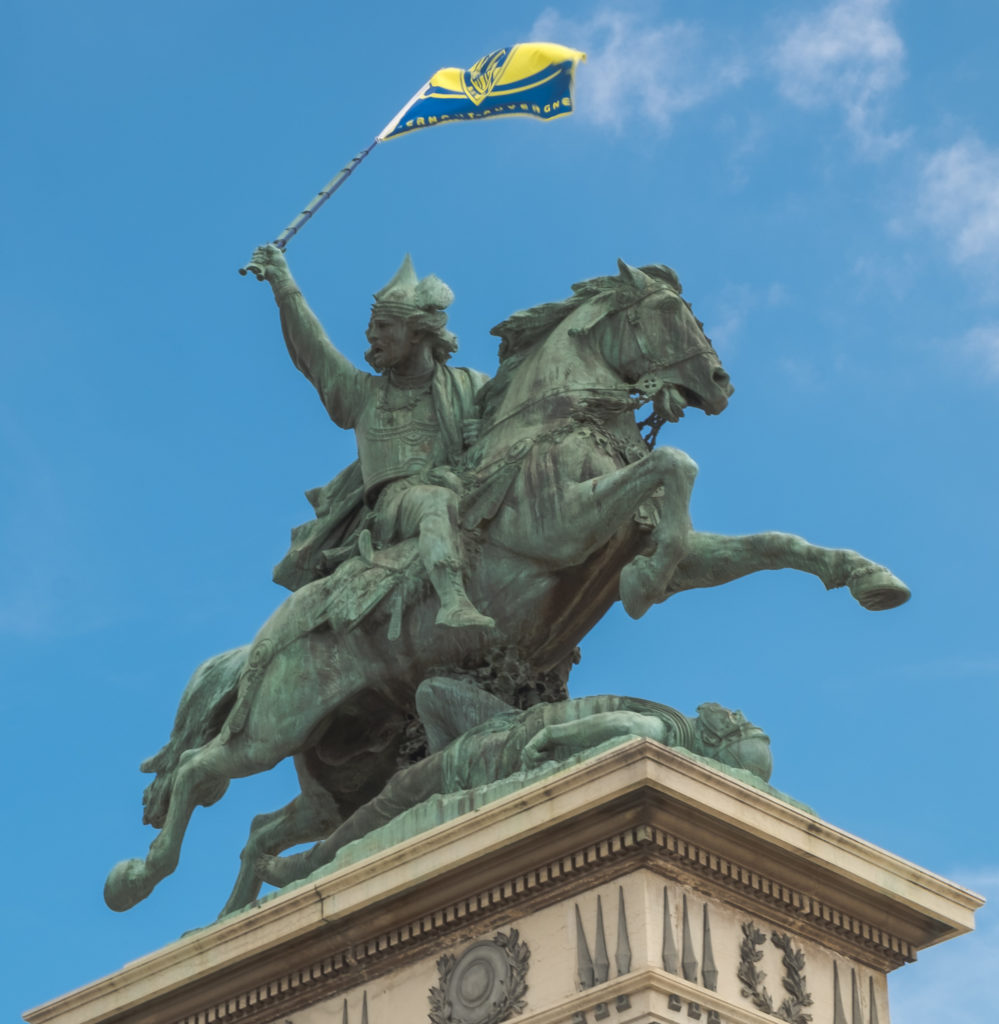
This is a city with an unusually rich medieval heritage and extraordinary natural beauty, but over the decades it’s acquired a stereotypical reputation among other French people as being a little too industrial, a little too “rural”; the ASM’s run to the championship in 2010 provoked an explosion of local pride, a little like the Chicago Cubs’ run to the World Series title last year.
On the day of the final, we were at home in Clermont-Ferrand and we invited friends to our house to watch the match with us. Meanwhile, thousands of fans assembled in the vast Place de Jaude in the center of Clermont-Ferrand to catch the action on big-screen TVs set up for the occasion. We threw open the back doors of our house, and every time the ASM team scored we could hear, with perhaps a second’s delay, the great roar coming up the hill from downtown. Our team won the championship, defeating USA Perpignan 19 – 6!
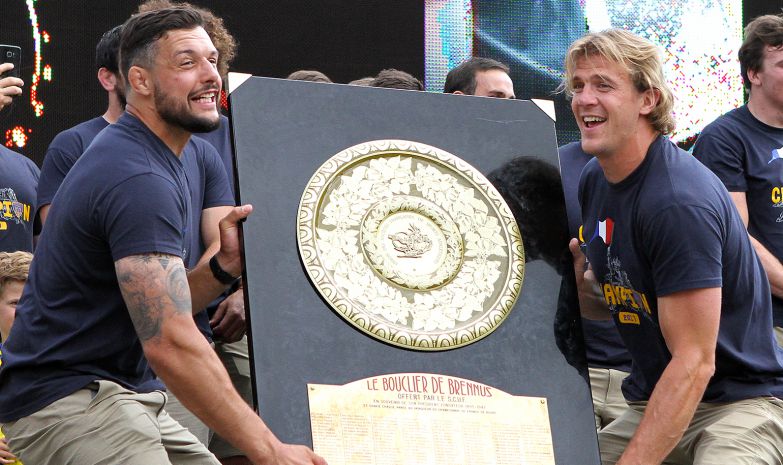
The "Bouclier de Brennus"
The next day,all of us working in the Michelin headquarters complex stopped whatever we were doing and came down to the central plaza for the presentation of the players and the iconic trophy, the “Bouclier de Brennus”. (It looks like a warrior’s shield, and in fact there was a famous Gallic chief named Brennus – but the trophy is named for the guy who created it in 1892 to serve as the reward
for France’s national championship team – a little like the Stanley Cup in hockey or the crystal football presented to the U.S. collegiate football champions.)
The whistle that registered on the Richter scale
The “curse” wasn’t completely forgotten, though. The ASM lost again in the Top 14 finale in 2015, lost the European championship in that same year and again earlier this year. So even when the team made it to the title game last Sunday, there was a lot of anxiety about the possibility of coming up a little short once more.
The concerns persisted almost to the end of the game against the club from Toulon. In the electric atmosphere of the great circular Stade de France in Paris, Clermont took an early 3-0 lead, then moved to 8-0 after an incredible 80-meter drive. With the score at 13-0, Toulon started coming back, getting as close as 19-16 in the second half. When Clermont scored late and held off a last-minute surge, the game ended 22-16… and back home, the 40,000 people gathered in the Place de Jaude exploded in celebration. Seismologists in the local observatory noted a sharp spike in their records at the exact moment the final whistle blew in Paris!
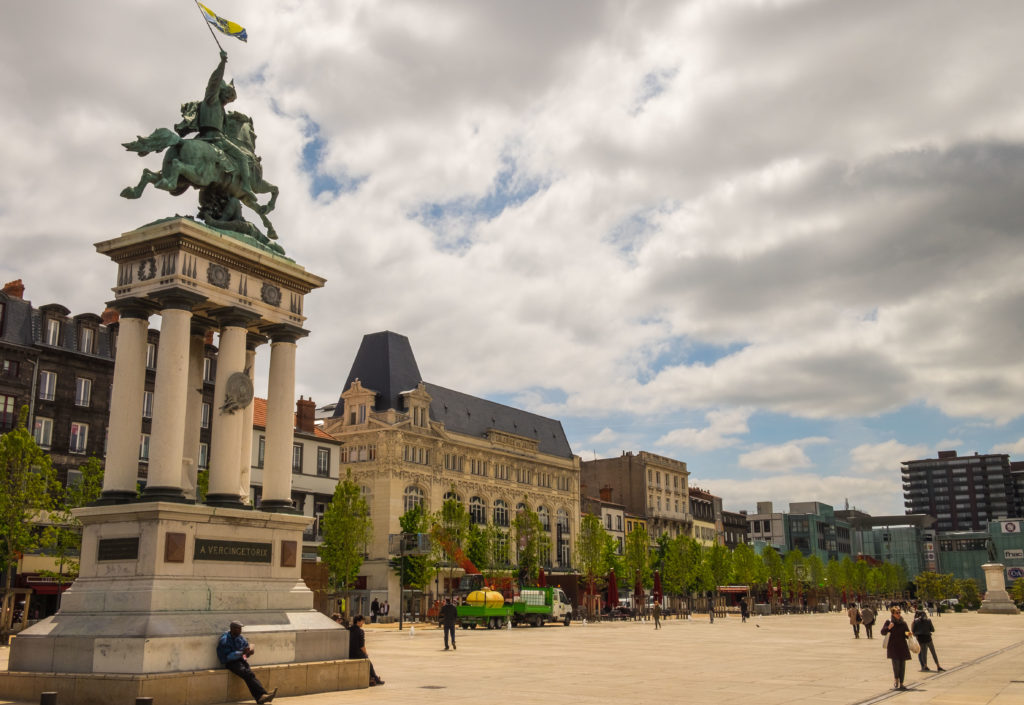
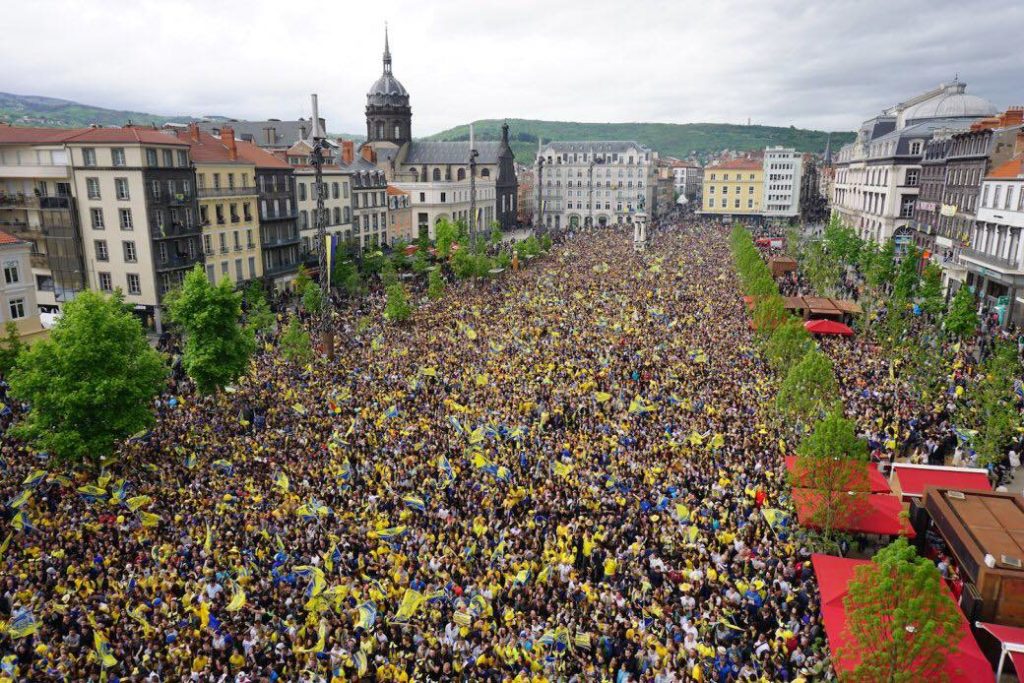
You can get in on the action!
This is not a story I’d usually cover in this blog, but I have to tell you it brings back a surge of civic pride for me to see the celebrations as they’ve unfolded in Clermont-Ferrand this week. The Bouclier de Brennus, having been touched and admired up-close by thousands as it made its victory tour around town, is now on display for the next several weeks at the ASM’s own museum in the Stade Marcel Michelin.
Go see it if you’re in the area and have the opportunity. The museum (the “ASM Experience”) will tell you the story of this team’s long, often-disappointing history – and you’ll get the full effect of the excitement and pride that come with this year’s return to the highest rank of French sports!
Do you have a favorite French team that you follow? What new sport(s) have you gotten introduced to in France? Please tell us about your experience in the Comments section, below, and take a second to share this story using the button(s) for your preferred social-media platforms.
... and here's a recap of last Sunday's game
https://www.youtube.com/watch?v=CWLwZKOLZHk
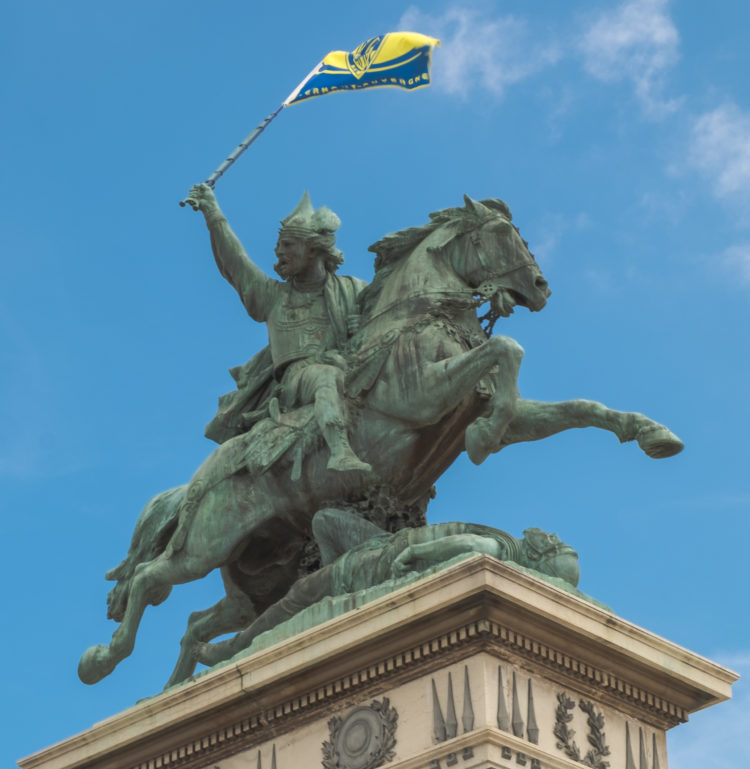

Ah…..what a fun piece to read Richard! It does, indeed, bring back many fond memories of the spirit of ASM Rugby and the unifying effect it had on the people of Cfe! Thanks for the reminder!😊 I particularly enjoyed the history lesson on the team….all new to me! Aren’t we glad we have “our” Tigers to cheer for over here?!
Thanks, Ellen. You’re absolutely right — the way this championship (and the one in 2010) bring people together is one of the most remarkable things we saw in Clermont-Ferrand. I don’t remember a single downtown shop that didn’t have some version of the yellow-and-blue in their window!